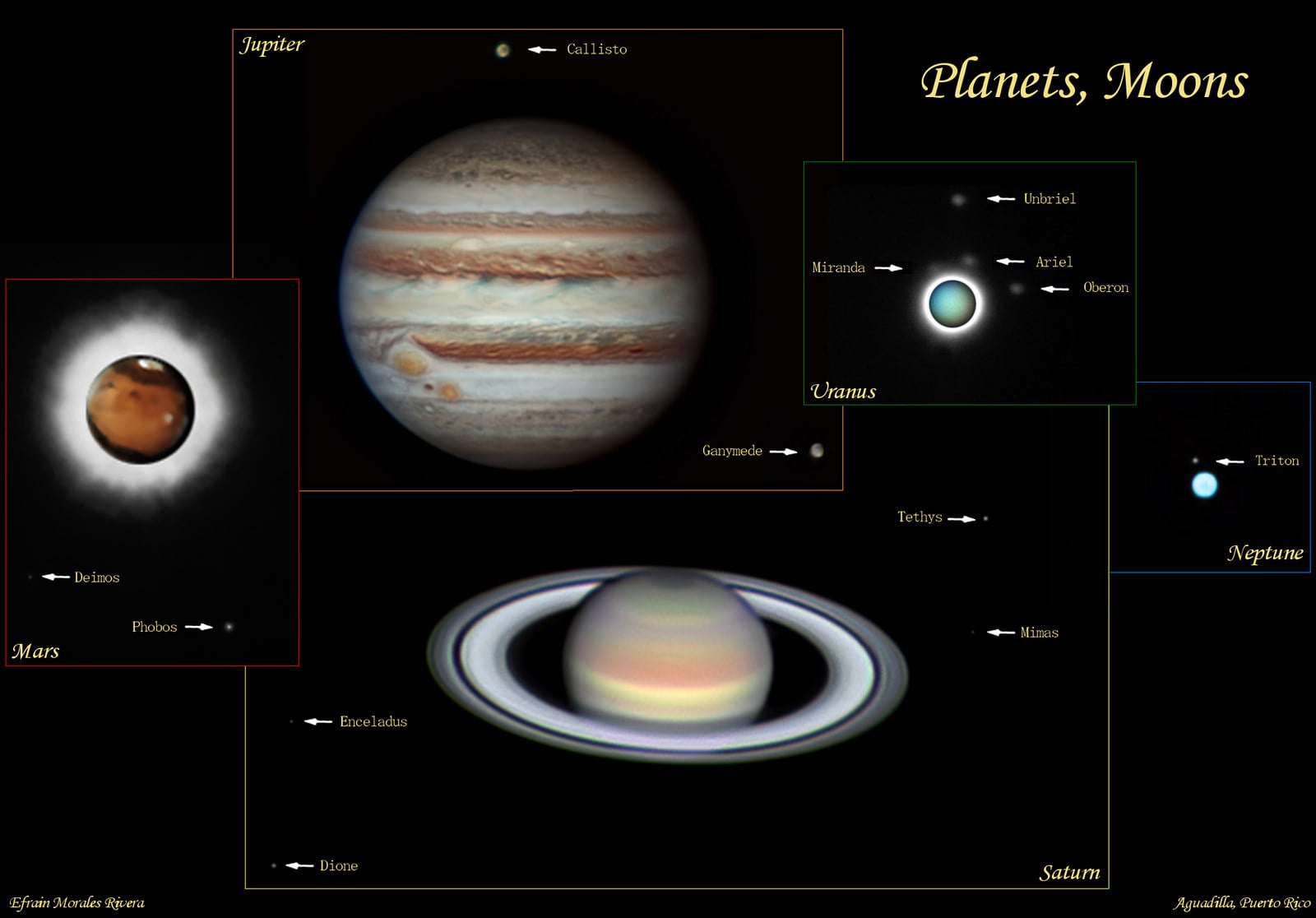It seems as if the planets are fleeing the evening sky, just as the Fall school star party season is getting underway. Venus and Mars have entered the morning sky, and Jupiter reaches solar conjunction this week. Even glorious Saturn has passed eastern quadrature, and will soon depart evening skies.
Enter the ice giants, Uranus and Neptune. Both reach opposition for
2015
over the next two months, and the time to cross these two out solar system planets off your life list is now.
[caption id="attachment_122043" align="alignnone" width="580"]
Looking east at dusk in late August, as Uranus and Neptune rise. Image credit:
Stellarium
[/caption]
First up, the planet Neptune reaches opposition next week in the constellation Aquarius on the night of August 31
st
/September 1
st
. Shining at magnitude +7.8, Neptune spends the remainder of 2015 about three degrees southwest of the +3.7 magnitude star Lambda Aquarii. It's possible to spot Neptune using binoculars, and about x100 magnification in a telescope eyepiece will just resolve the blue-grey 2.3 arc second disc of the planet. Though Neptune has 14 known moons, just one,
Triton
, is within reach of a backyard telescope. Triton shines at magnitude +13.5 (comparable to Pluto), and orbits Neptune in a retrograde path once every 6 days, getting a maximum of 15" from the disk of the planet.
[caption id="attachment_122044" align="alignnone" width="580"]
The path of Neptune from late August through early November 2015. Inset: the position of Neptune's moon Triton on the evening of August 31st: Image credit:
Starry Night
Education software[/caption]
Uranus reaches
opposition
on October 11
th
in the adjacent constellation Pisces. Keep an eye on Uranus, as it nears the bright +5.2 magnitude star Zeta Piscium towards the end on 2015. Shining at magnitude +5.7 with a 3.6 arc second disk, Uranus hovers just on the edge of naked eye visibility from a dark sky site.
[caption id="attachment_122041" align="alignnone" width="580"]
Uranus, left of the eclipsed Moon last October. Image credit and copyright:
A Nartist
[/caption]
It'll be worth hunting for Uranus on the night of September 27
th
/28
th
, when it sits 15 degrees east of the eclipsed Moon. Uranus turned up in many images of last Fall's total lunar eclipse. This will be the final total lunar eclipse of the
current tetrad
, and the Moon will occult Uranus the evening after for the South Atlantic. This is part of a series of 19 ongoing occultations of Uranus by the Moon worldwide, which started in August 2014, and end on December 20
th
, 2015. After that, the Moon will move on and begin occulting Neptune next year in June through the end of 2017.
[caption id="attachment_122045" align="alignnone" width="580"]
The visibility footprint of the September 29th occultation of Uranus by the Moon. Image credit:
Occult 4.0
.[/caption]
Uranus has 27 known moons, four of which (Oberon, Ariel, Umbriel and Titania) are visible in a large backyard telescope. See our
extensive article on hunting the moons
of the solar system for more info, and the
JPL/PDS rings node
for corkscrew finder charts.
[caption id="attachment_122046" align="alignnone" width="580"]
The path of Uranus, from late August through early December 2015. Inset: the position of the moons of Uranus on the evening of October 12th. Image credit:
Starry Night Education
software[/caption]
The two outermost worlds have a fascinating entwined history. William Herschel discovered Uranus on the night of March 13
th
, 1781. We can be thankful that the proposed name 'George' after William's benefactor King George the III didn't stick. Herschel initially thought he'd discovered a comet, until he followed the slow motion of Uranus over several nights and realized that it had to be something large orbiting at a great distance from the Sun. Keep in mind, Uranus and Neptune both crept onto star charts unnoticed pre-1781. Galileo even famously sketched Neptune near Jupiter in 1612! Early astronomers simply considered the classical solar system out to Saturn as complete, end of story.
[caption id="attachment_122042" align="alignleft" width="300"]
A classic 7" Merz refractor at the Quito observatory, nearly identical to the instrument that first spied Neptune. Image Credit: Dave Dickinson[/caption]
And the hunt was on. Astronomers soon realized that Uranus wasn't staying put: something farther still from the Sun was tugging at its orbit. Mathematician Urbain Le Verrier predicted the position of the unseen planet, and on and on the night of September 23
rd
, 1846, astronomers at the Berlin observatory spied Neptune.
In a way, those early 19
th
century astronomers were lucky. Neptune and Uranus had just passed each other during a close encounter in 1821. Otherwise, Neptune might've remained hidden for several more decades. The synodic period of the two planets—that is, the time it takes the planets to return to opposition—differ by about 2-3 days. The very first documented conjunction of Neptune and Uranus occurred back in 1993, and won't occur again until 2164. Heck,
In 2010
, Neptune completed its first orbit since discovery!
To date, only one mission, Voyager 2, has given us a close-up look at Uranus and Neptune during brief flybys. The final planetary encounter for Voyager 2 occurred in late August in 1989, when the spacecraft passed 4,800 kilometres (3,000 miles) above the north pole of Neptune.
All thoughts to ponder as you hunt for the outer ice giants. Sure, they're tiny dots, but as with many nighttime treats, the 'wow' factor comes with just what you're seeing, and the amazing story behind it.
 Universe Today
Universe Today
